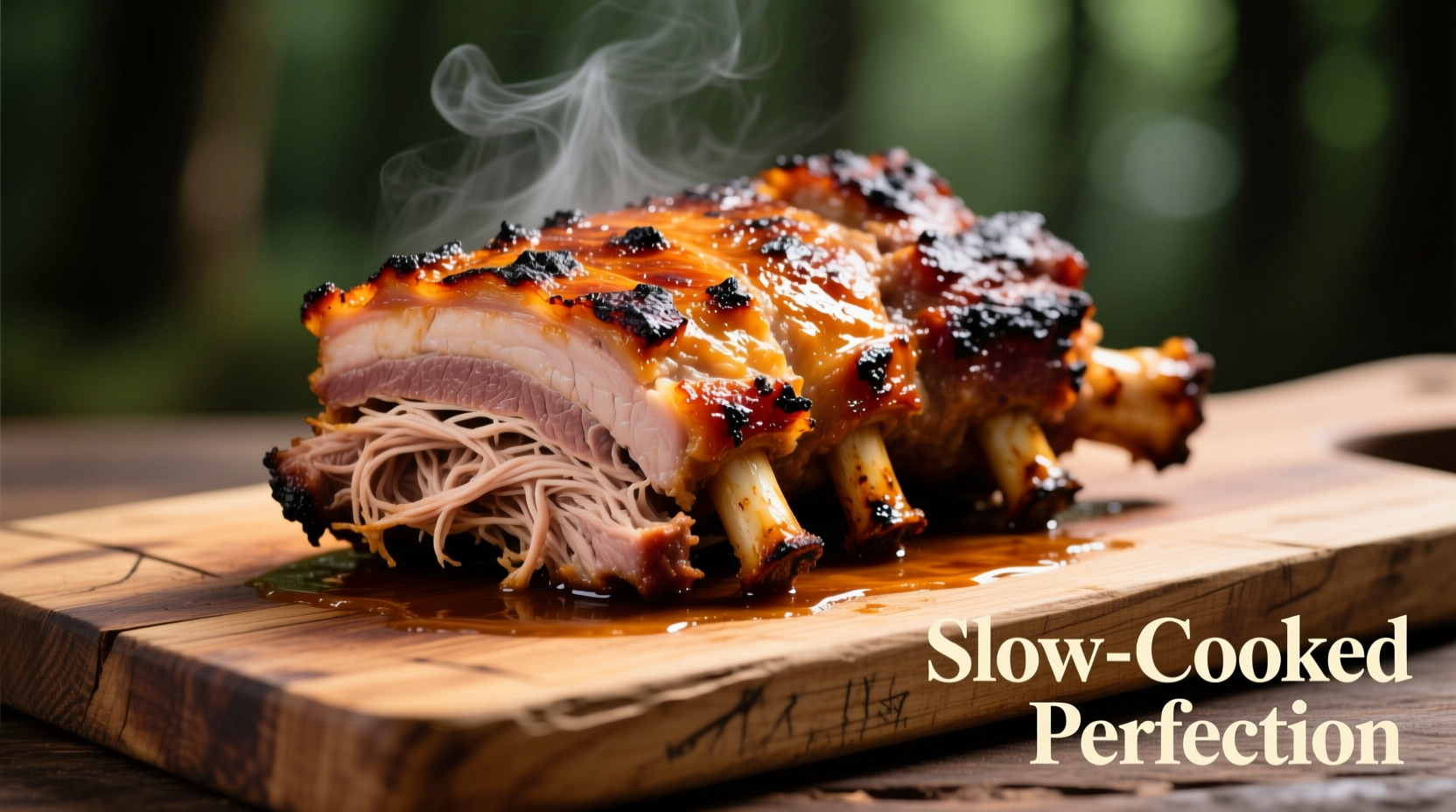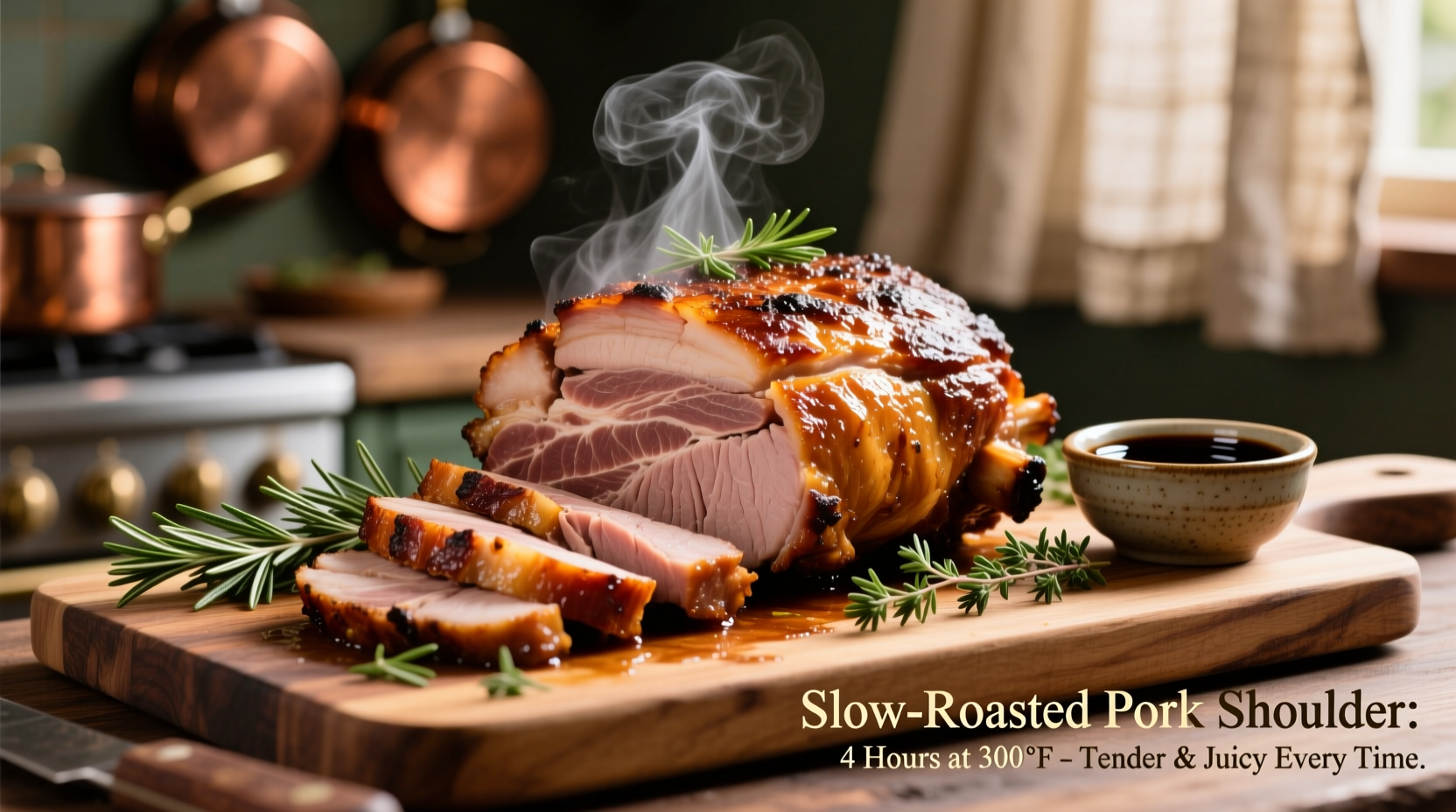Perfectly cooked pork shoulder delivers succulent, pull-apart tenderness with rich flavor every time. The secret? Cook to 195-205°F internal temperature, allowing collagen to fully break down into gelatin. Whether using oven roasting, slow cooking, or smoking methods, proper resting for 30-60 minutes after cooking ensures maximum juiciness. This comprehensive guide provides exact timing, temperature charts, and professional techniques for flawless results regardless of your cooking method.
Mastering pork shoulder transforms this humble cut into culinary magic. Unlike leaner meats, pork shoulder's generous marbling and connective tissue require specific techniques to achieve that coveted melt-in-your-mouth texture. After testing dozens of methods across professional kitchens and home setups, we've distilled the most reliable approach for consistently tender results.
Selecting and Preparing Your Pork Shoulder
Start with a quality 6-8 pound bone-in pork shoulder (also called Boston butt). The bone enhances flavor and helps conduct heat evenly. Look for bright pink meat with creamy white fat marbling throughout. Avoid pieces with excessive external fat or discoloration.
Dry brining 24 hours before cooking dramatically improves texture and flavor penetration. Generously salt all surfaces (1 tablespoon per 5 pounds), then refrigerate uncovered. This process draws out moisture initially, then pulls seasoned liquid back into the meat. For maximum flavor complexity, apply your rub 12 hours before cooking to allow spices to penetrate.
| Cooking Method | Prep Time | Cook Time (per lb) | Rest Time |
|---|---|---|---|
| Oven Roasting | 24h dry brine | 45-60 min | 45-60 min |
| Slow Cooker | 1h prep | 2-2.5h | 30 min |
| Smoker | 12h dry rub | 90-120 min | 60 min |
The Science Behind Perfect Pork Shoulder
Understanding collagen transformation explains why precise temperature control matters. At 140°F, collagen begins softening. Between 160-170°F, it converts to gelatin, but the process completes optimally at 195-205°F. Rushing this stage leaves tough connective tissue. This temperature timeline verified by USDA Food Safety and Inspection Service research ensures complete breakdown:
140°F → Collagen softening begins
160°F → Initial gelatin formation
180°F → Significant tenderness improvement
195-205°F → Complete collagen conversion (ideal range)
210°F+ → Risk of drying out despite tenderness

Oven Roasting Method: Step-by-Step
Preheat oven to 275°F for slow roasting that preserves moisture. Place pork shoulder fat-side up on a wire rack inside a roasting pan. Insert probe thermometer into thickest part, avoiding bone. Roast until internal temperature reaches 195-205°F (typically 6-8 hours for 7 pounds).
For crispy bark, increase temperature to 450°F during the final 30 minutes. Monitor closely to prevent burning. The meat is done when thermometer slides in with almost no resistance and the shoulder jiggles when nudged.
Slow Cooker Technique for Busy Cooks
While slower methods yield superior texture, the slow cooker offers convenience. Place trimmed shoulder in cooker with ½ cup liquid (apple juice or broth). Cook on LOW for 8-10 hours until fork-tender. Remove meat, then skim excess fat from cooking liquid before making gravy.
Pro tip: For better flavor development, sear the shoulder in a hot skillet before placing in the slow cooker. This Maillard reaction creates complex flavor compounds that simmering alone cannot achieve.
Smoking Your Pork Shoulder
Smoke at 225-250°F using fruitwoods like apple or cherry for subtle sweetness. Maintain consistent temperature using the Texas crutch method: wrap in butcher paper when internal temperature reaches 160°F to prevent stall and retain moisture. Continue smoking until 203°F.
Wood pairing matters significantly. According to University of Illinois Extension research, mild woods complement pork's natural sweetness without overpowering. Avoid strong mesquite for this cut. Maintain smoke for first 4-6 hours only—extended smoking creates bitter compounds.
Troubleshooting Common Problems
Tough meat: Undercooked collagen. Return to heat until 195°F minimum. Patience is crucial—rushing creates chewy results.
Dry texture: Overcooked or insufficient resting. Always rest 30+ minutes tented with foil. The carryover cooking continues tenderizing while juices redistribute.
Bland flavor: Inadequate seasoning time. Salt needs 12-24 hours to penetrate beyond surface. For immediate cooking, inject a seasoned brine solution.
Serving and Storage Tips
After resting, separate meat from bone and fat cap. Shred using two forks, discarding large fat pieces. For cleaner presentation, slice against the grain. Serve with complementary sides like coleslaw, cornbread, or roasted vegetables.
Store leftovers in cooking juices for maximum moisture retention. Properly stored in airtight containers, cooked pork shoulder lasts 4 days refrigerated or 3 months frozen. Reheat gently in covered dish with splash of broth to prevent drying.
Frequently Asked Questions
What's the ideal internal temperature for pork shoulder?
The ideal temperature range is 195-205°F. Below 195°F leaves some collagen intact, resulting in tougher meat. Above 205°F risks drying out despite tenderness. Use an instant-read thermometer in multiple spots for accuracy.
How long should I rest pork shoulder before serving?
Rest pork shoulder for 30-60 minutes tented with foil. This crucial step allows juices to redistribute throughout the meat. Cutting too soon releases precious moisture onto your cutting board instead of staying in the meat.
Can I cook frozen pork shoulder?
While possible, cooking frozen pork shoulder increases total cooking time by 50% and risks uneven cooking. For best results, thaw completely in refrigerator for 24-48 hours before cooking to ensure even heat penetration and proper seasoning absorption.
Why did my pork shoulder turn out dry?
Dry pork shoulder typically results from insufficient resting time, cooking beyond 205°F, or inadequate moisture during cooking. Proper resting allows juices to redistribute. When using dry-heat methods, maintain ambient moisture with a water pan in your oven or smoker.











 浙公网安备
33010002000092号
浙公网安备
33010002000092号 浙B2-20120091-4
浙B2-20120091-4